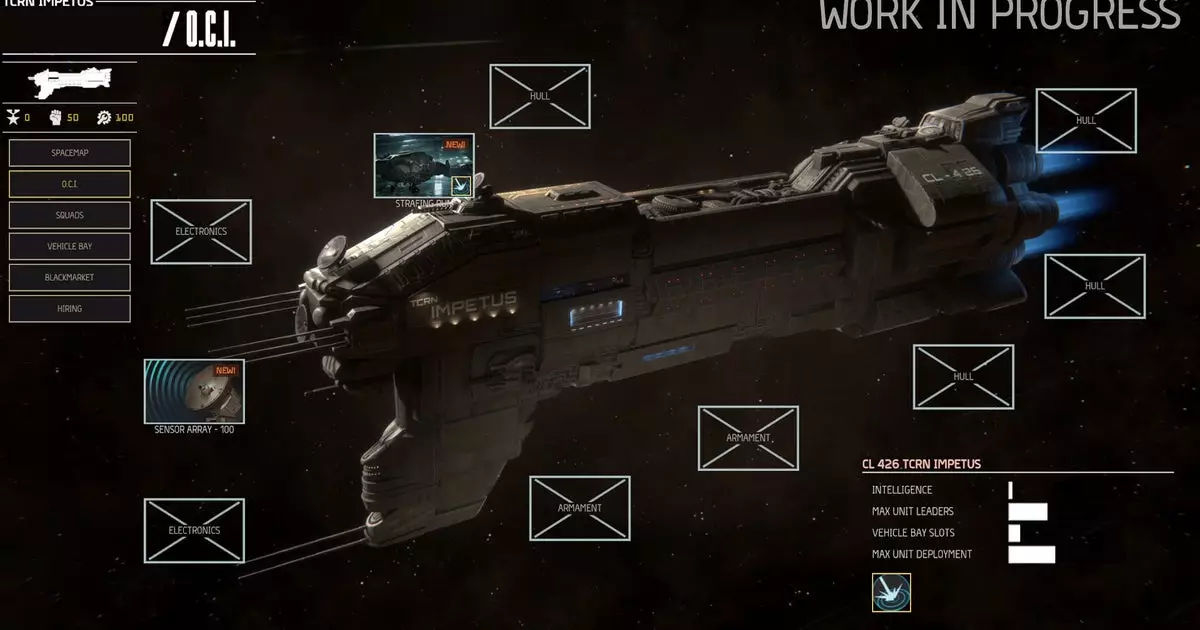The world of turn-based strategy games has always been a fertile ground for innovative gameplay mechanics and compelling narratives. One of the latest additions to this genre is “Menace,” which has sparked interest among gaming enthusiasts for its combination of tactical depth and RPG elements. While early impressions from players like Staff Sergeant James Archer highlight the game’s immersive battles, it is the underlying strategic layer that deserves closer scrutiny to truly appreciate what “Menace” brings to the table.
At the crux of “Menace” lies the starmap, a navigational interface that acts as the central hub for players to launch missions, manage resources, and interact with various factions. Unlike typical battle-focused experiences, the starmap introduces an essential layer of strategic planning. Players must assess their next moves carefully, balancing the urgency of distress calls from factions against the long-term implications of their choices.
Ignoring these requests can lead to negative repercussions, such as deteriorating relationships with NPC factions, which can hinder resource access and support in future missions. Engaging proactively with these factions can prove rewarding, offering a diverse array of challenges and opportunities that can embellish the gameplay experience. This emphasis on reputation management, captured through the starmap’s functionality, adds a flavorful complexity to the otherwise straightforward mission-to-mission gameplay.
“Menace” goes beyond mere combat; it demands that players engage in resource management—a component often overlooked in fast-paced games. One key resource is Promotion Points, which facilitate leveling up squads and enhancing their operational capabilities. The Operational Capability Improvements (OCI) system adds depth to ship upgrades, enabling players to fortify their vessel, the Impetus. However, with finite resources at their disposal, players must strategically decide how to allocate their points to maximize efficiency without compromising their crew’s morale.
Morale, described as a volatile element within the game, is another significant factor that requires players’ attention. Crew management introduces an element of unpredictability that could manifest in bar fights or other chaotic scenarios, mirroring the unpredictable nature of real-life operations. Choosing whether to intervene in such incidents or conserve resources for pressing mission-related upgrades adds layers of tactical consideration to the gameplay. Each decision potentially alters the dynamics of the squad and the overall mission objectives.
“Menace” positions itself firmly within the tactical RPG sphere by offering a plethora of combat upgrades designed to enhance both offensive and defensive maneuvers. The prospect of outfitting the Impetus with unique operational advantages, like air support and intelligence-gathering capabilities, emphasizes the importance of reconnaissance over sheer firepower. This strategic emphasis encourages players to prioritize gathering intelligence before engaging in combat, ensuring that battles are won not solely through might but through informed decision-making.
Moreover, the armory system enriches the gameplay experience by providing a vast selection of weapons, armors, and accessories, fostering customization and strategic depth. As squad leaders possess unique perks and traits, players must explore synergistic combinations that best suit their play style. It is a system that invites creativity in squad composition and tactical execution, encouraging players to forge their unique path through the game’s challenges.
At its core, “Menace” can indeed be likened to a sandwich—its flavorful filling being the dynamic turn-based combat and intricate character development, while the strategic aspects form the essential, albeit understated, bread that binds the experience together. The simplicity of the strategic framework might initially seem unimpressive to some, yet it serves to anchor the more exhilarating elements of gameplay.
As players prepare to dive into the world of “Menace,” they should embrace the call for balance between action and strategy. The game is set to release later next year, and it promises to offer a rich tapestry of tactical engagement where thoughtful decision-making can lead to victory amidst chaos. “Menace” may not reinvent the genre, but it stands as a significant contribution that intertwines strategy and RPG elements into a cohesive and satisfying whole.


Leave a Reply